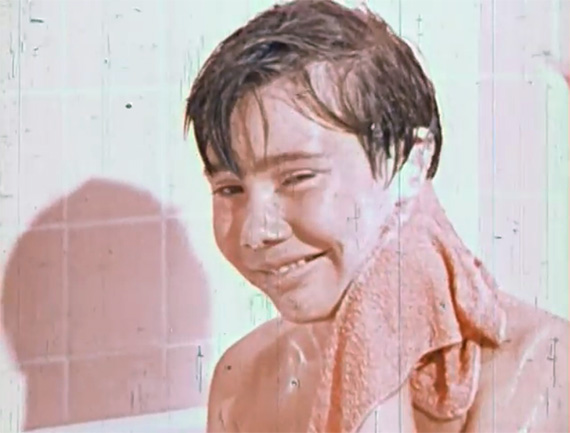Museum’s Final Friday takes a closer look at “Those Naughty Germs” – Nov. 25
For immediate release ‐ November 15, 2016
Contact: Jon Pishney, 919.707.8083. Images available upon request

RALEIGH — Bacteria. We kill them with pills, spray them with bleach, and scrape them off our teeth every morning. But they also help digest our food, keep our crops healthy, and apparently they live in fancy yogurt. So how do you know the good from the bad? Enter the amazing world of germs when the North Carolina Museum of Natural Sciences hosts “Those Naughty Germs,” featuring short films plus an enlightening presentation from NC State biologist and author Rob Dunn, Final Friday, November 25, 5:30-9 p.m.
A/V Geeks’ Skip Elsheimer will be showing short films related to our most distant relatives, including:
- “Colds and Flu” (1975) — The body and its defense system are illustrated by kids in armor attacking a castle.
- “Communicable Diseases: They Just Go Around” (1972) — Teenagers learn about diseases at a party where everybody seems to be sick with something.
- “Cell Wars” (1987) — We learn about how the body defends itself against foreign invaders 1980s-style, with odd costumes and wonderfully goofy video effects.
- “Soapy the Germ Fighter” (1951) — An oversized talking bar of soap teaches young Billy Martin about germs and what to do to avoid them.
Rob Dunn is a biologist and writer in the Department of Biological Sciences at N.C. State University. In his research he uses many different approaches to understand the stories of the species all around us and how they have changed or might change in the future. Dunn’s writing focuses on the stories of the scientists behind the science, and has appeared in Natural History, BBC, Wildlife Magazine, Scientific American, Smithsonian Magazine, National Geographic and other magazines. His first book, “Every Living Thing,” was awarded the National Outdoor Book Award for Natural History writing. A more recent book, “The Wild Life of Our Bodies,” examines the long human relationship with other species (be they tapeworms or tigers) and how changes in those relationships are affecting our health and well-being.
Prior to the presentation and films, which begin at 7 p.m., visitors can visit germ-related Science Stations:
- What Does Ferret Fungus Look Like, Anyway? — Can you identify an animal based on its microbiome? A number of animals from the Museum’s collection kindly agreed to let us swab their armpits so you can find out. Come meet them, and their microbiomes, face to flagella!
- Microbes & Your Food — How do microbes make chocolate, cheese, hot sauce and pickles so delicious? Find out at the tasting table!
- The Microbiome and Food Safety — Join representatives of the NC State Food Science Club to explore the good, bad and ugly of food microbes. Are the germs in your food helping you or hurting you?
- Tasty and Healthy Microbes — Members of the NC State Food Science Club will explain how microbes impact the taste and helpfulness of our food, particularly pickles, yogurt and chocolate.
Can’t get enough microbes? Visit “The Secret World Inside You,” the Museum’s current featured exhibition, for a Final Friday special admission price of $5 per person between 5:30 and 7 p.m. Using larger-than-life models, computer interactives, videos and art installations, “The Secret World Inside You” explores the rapidly evolving science that is revolutionizing how we view human health and understand the inner workings of our bodies. Visit naturalsciences.org/secretworld for information and tickets.
Final Fridays take place on the last Friday of each month. A/V Geeks’ Skip Elsheimer provides a fun night of trivia and tongue-in-cheek commentary on not-so-mainstream movies as well as samples from his vault of 24,000 films. Movies will be complemented by experts and hands-on science stations related to each night’s theme. Dinner (such as sliders or tacos), drinks (including NC beer and wine) and popcorn will be available to buy before the show. Doors open at 5:30 p.m., movies and presentations begin at 7 p.m. Admission: $5/person. For more information, a list of future Final Fridays, or to buy tickets, visit naturalsciences.org/finalfridays.
The North Carolina Museum of Natural Sciences (11 W. Jones St. and 121 W. Jones St.) in downtown Raleigh is an active research institution that engages visitors of every age and stage of learning in the wonders of science and the natural world, drawing them into the intriguing fields of study that are critical to the future of North Carolina. Hours: Mon.- Sat., 9 a.m.-5 p.m., and Sun., noon-5 p.m. Visit the Museum online at www.naturalsciences.org. Emlyn Koster, PhD, Museum Director; Susan Kluttz, Secretary, N.C. Department of Natural and Cultural Resources; Pat McCrory, Governor.
The N.C. Department of Natural and Cultural Resources (NCDNCR) is the state agency with a vision to be the leader in using the state’s natural and cultural resources to build the social, cultural, educational and economic future of North Carolina. Led by Secretary Susan Kluttz, NCDNCR’s mission is to improve the quality of life in our state by creating opportunities to experience excellence in the arts, history, libraries and nature in North Carolina by stimulating learning, inspiring creativity, preserving the state’s history, conserving the state’s natural heritage, encouraging recreation and cultural tourism, and promoting economic development. NCDNCR includes 27 historic sites, seven history museums, two art museums, two science museums, three aquariums and Jennette’s Pier, 39 state parks and recreation areas, the N.C. Zoo, the nation’s first state-supported Symphony Orchestra, the State Library, the State Archives, the N.C. Arts Council, State Preservation Office and the Office of State Archaeology, along with the Division of Land and Water Stewardship. For more information, please call (919) 807-7300 or visit www.ncdcr.gov.

